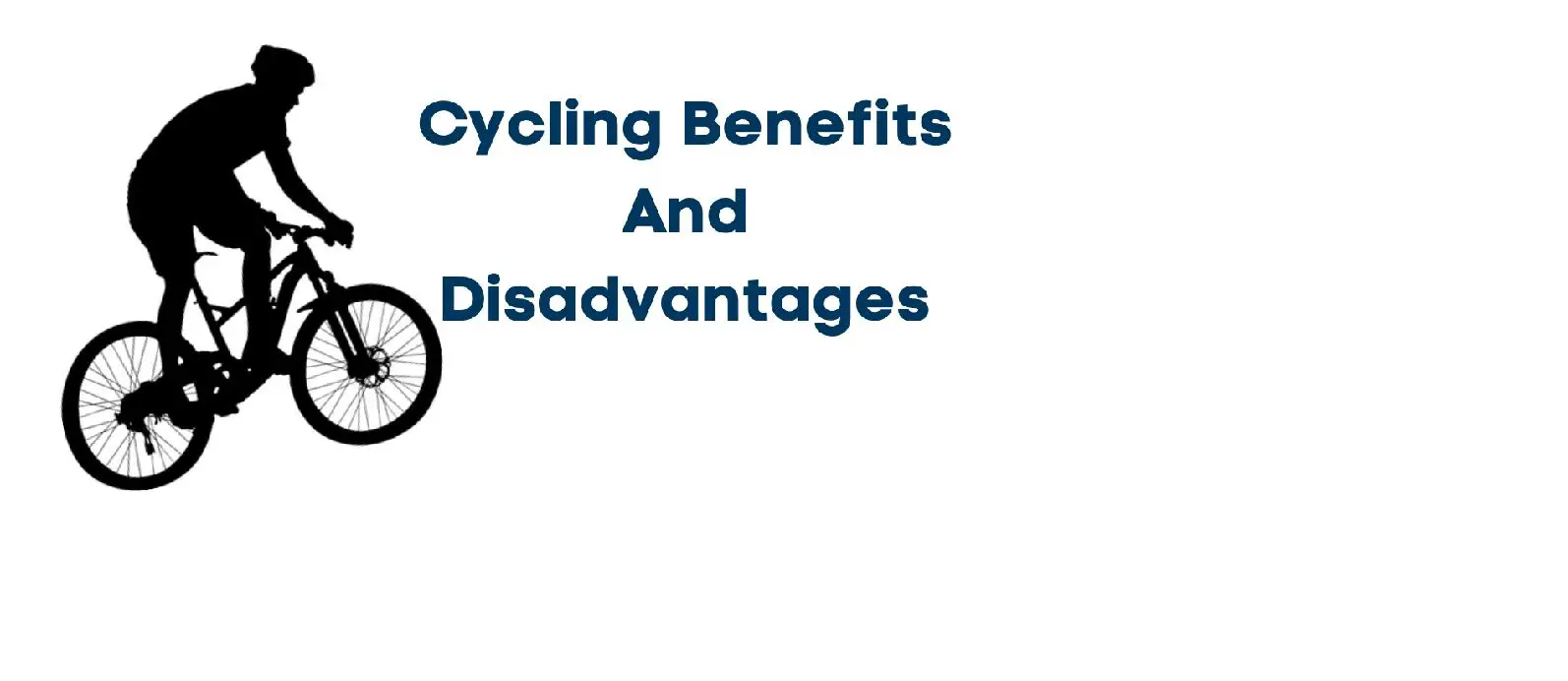eeds, as well as additional protective equipment if you decide on a more demanding cycling routine.
Cycling Benefits And Disadvantages

Cycling has many health benefits for ladies and men. It helps improve the different body systems including your muscle and cardiovascular systems. Cycling can also have a beneficial impact on your overall health and can even lower the risk of many illnesses. On the other hand, for extended periods, cycling may put pressure on the arteries and nerves which serve reproductive systems in both men and women. In some cyclists, it can also contribute to back pain and bone loss. Cycling can also be a truly dangerous means of transport. Many professional cyclists and those who use the bike as a regular means of transport have faced unfortunate accidents throughout many years. Below we will give you a brief overview of all relevant cycling benefits and disadvantages.
Benefits of Cycling
No matter what type of cycles you use, a folding bike or a regular bike, cycling has a very beneficial effect on the health and human body, and below we bring the main benefits that cycling brings to anyone who chooses to pedal.
Obesity and Weight Control
When it comes to weight loss, it is important to spend more calories, relative to the number of calories consumed. Cycling is a great activity that encourages weight loss, because you can spend between 400-1000 calories in an hour, depending on the intensity of cycling and the weight of the cyclist. Cycling has to be combined with a healthy eating plan if you are trying to lose weight.
Cardiovascular Disease
Regular cycling is considered good prevention concerning the development of cardiovascular diseases. Cyclists have a 50% reduced risk of a heart attack. Also, cycling is an excellent prevention of varicose veins. Thanks to cycling, the rate of contraction of the heart increases, which speeds up the movement of blood through the arteries and veins. Also, cycling strengthens the muscles of your heart, lowers resting pulse and reduces the levels of blood fat.
Cancer and Cycling
Cycling increases the heart rate, and thus promotes better circulation or blood flow through the body and reduces the chance of cancer and heart diseases. The results of the many studies suggested that the number of people suffering from cancer or heart disease could be reduced by 50% when cycling in the gym or outdoors.
Diabetes and Cycling
Cycling has proved to be one of the most suitable sports for diabetes patients, as it is an aerobic activity of a repetitive and constant type. In most cases, lack of physical activity is the main cause of the disease, and people who cycle for 30 minutes a day are up to 40% less likely to have diabetes.
Bone Injuries and Arthritis
Cycling will enhance your endurance, strength, and balance. If you have osteoarthritis, riding a bike is an ideal form of exercise, because it is a low-impact exercise that places little stress on the joints. The percentage of cycling seniors is increasing day by day because it helps improve their flexibility without causing any muscle or joint pain. If you ride your bike regularly, you will have very flexible knees and many other benefits for legs.
Mental Illness and Cycling
Cycling is associated with improved brain health and a decrease in cognitive changes that can later cause dementia. Regular bike riding can reduce mental health conditions, such as depression, stress, and anxiety.
Disadvantages of Cycling
Although cycling is an amazing sport that pumps your heart and allows you to get your workout indoors and outdoors, cycling also has some disadvantages. There’s plenty to think about between traffic hazards, pollution, and injury risk if you’re considering hitting the road on your bike.
Road Hazards
Bikes are especially susceptible to road accidents. Since their build quality is not so strong as cars and they have thin tires, inattentive and abrupt changes can be dangerous on the road surface, causing even the cautious and seasoned rider to slip or lose control and step onto the path of a vehicle. Road dangers are most likely to cause cycling injuries, including potholes, sewer grates, and rail and trolley tracks.
Saddle Sadness
Several studies have examined the possible health effects of long bicycles over the past few years, including the possibility of excessive pressure from some bicycle saddles to the urogenital region of cyclists, restricting genital blood flow, and adverse effects on sexual function.
Pollution
Cyclists are known to experience high exposure to the air pollutants associated with traffic. Furthermore, traffic-related exposure and traffic to air pollution are major factors influencing the choice of cycling.
Nerve Injury
Neuropathy of bicycle seats is one of the most common injuries identified by cyclists. The injuries and symptoms are caused by the cyclist supporting his or her body weight on a narrow seat and are believed to be associated with either vascular or neurological pudendal nerve injury.
